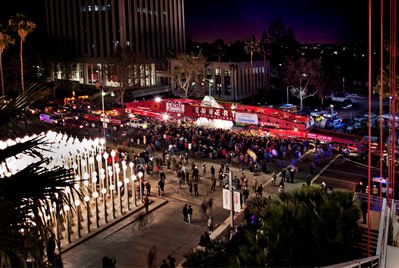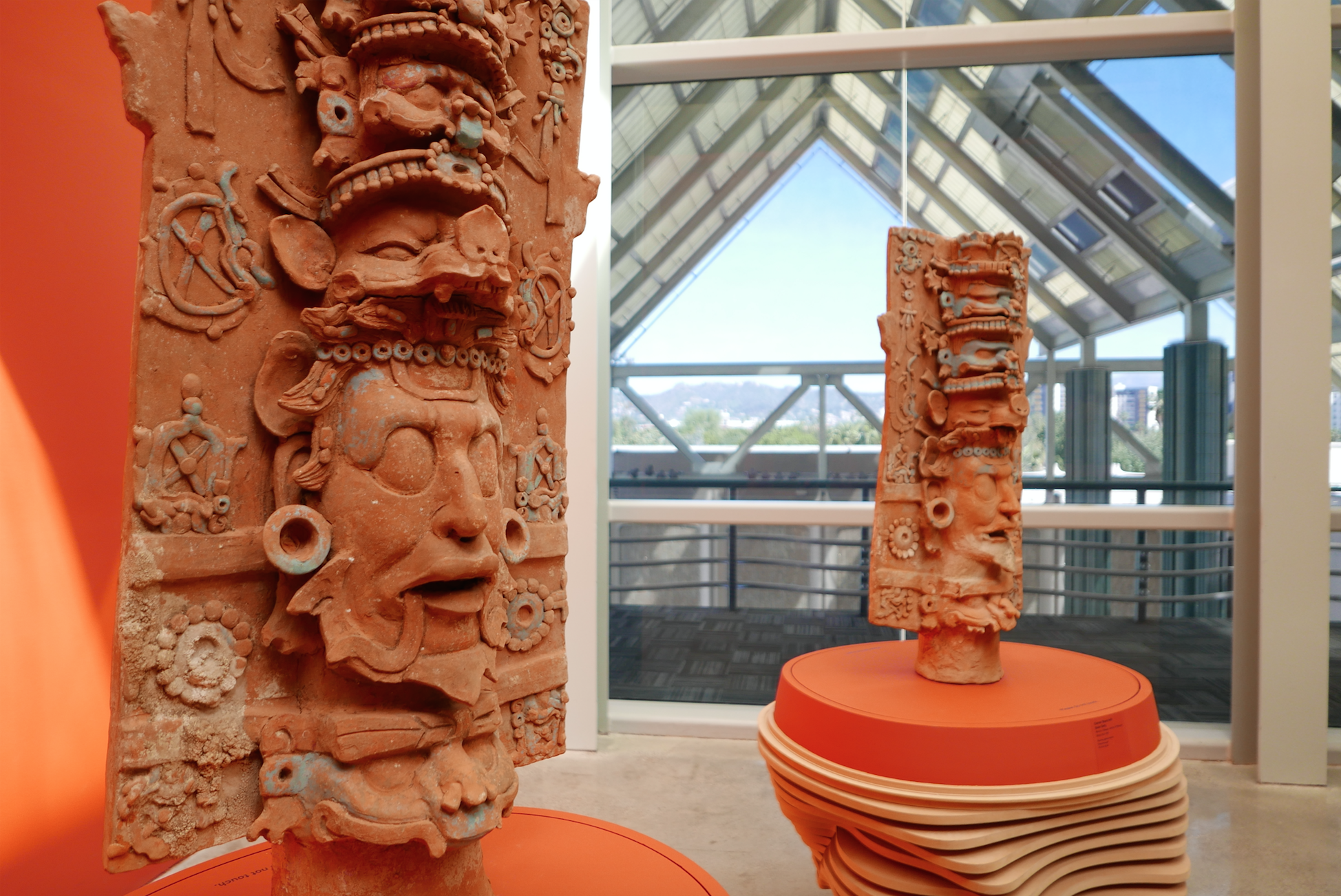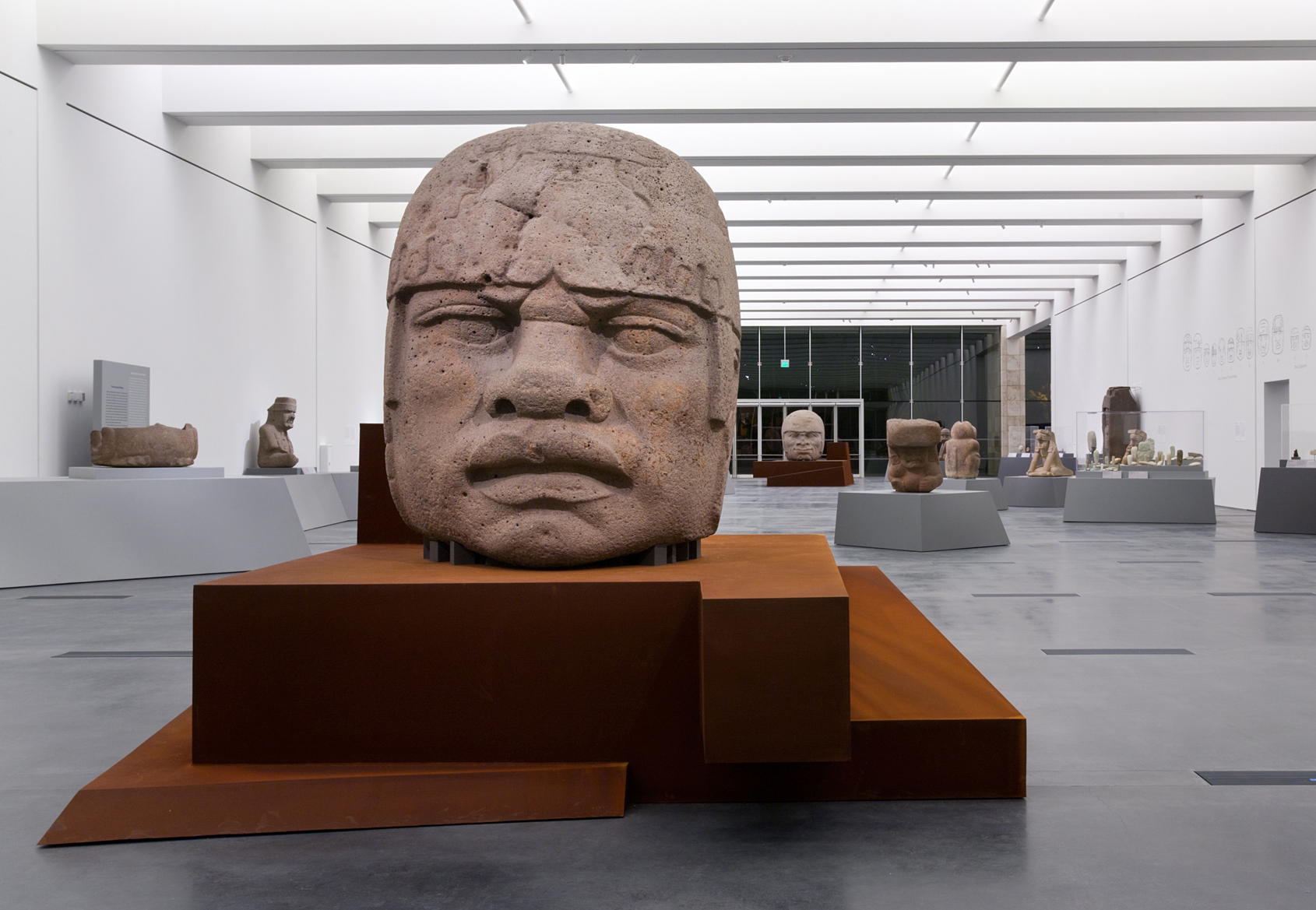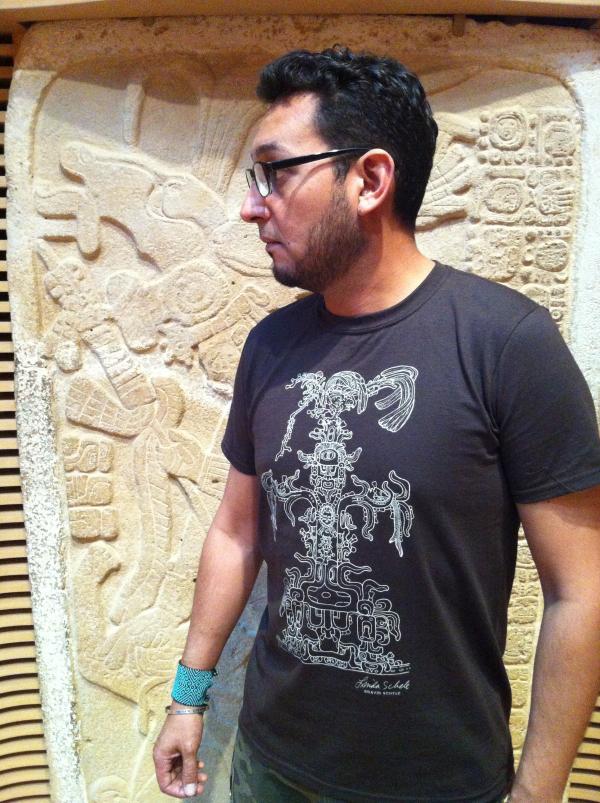Unframed is taking a look behind the scenes to profile the creative, dedicated people who make LACMA special. We sat down with educator Eduardo Sanchez to talk about the transformation of the museum, his creative outlet, and his favorite exhibition.
Tell us what you do at LACMA.
I’m in the education and public programs department, and my current title is content specialist for Latin American art. I started off as a gallery educator 16 years ago. I’d come here in the mornings before we were open to the public and do these school tours. I just fell in love with the education part of it. This idea that you can work with youth and expose them to things that appear in their history books, but in a three-dimensional way. They can see it come to life and make a personal connection with the object. Our department has education coordinators and content specialists, and my job is a combination of both. It just made sense to give it a try, because my background and speciality are in Pre-Columbian art and ancient history. And it’s fun—I still help with the tours and work in the education programs in the mornings, but when there are exhibitions or special lectures that have to do with Latin American art or art of the ancient Americas, I’ll step in and help put together lectures, film series, or panel discussions. So now I feel like I have more involvement with the content.
How have you seen the campus change in the past 16 years?
I saw the Resnick Pavilion and BCAM come up. I watched Levitated Mass come in 2012. That was really exciting. Some of the educators were assigned to communities because it would make these pit stops during the day and travel at night. I remember going to Long Beach and the community would come out; there were festivals and it was just a different thing at each town as it migrated its way over here. The night it arrived here, I was living in Koreatown by Wilshire and Western. It actually turned the corner on Wilshire, so there were a lot of people out that night for its last stretch. And I walked with it to the campus.

What is your favorite artwork in the collection?
I’ve been here so long that I go through phases or connections with objects when I’m researching them for a project or a talk or a lecture or a tour. Right now I’m fascinated with the censer stands that are up in the Ancient Americas gallery. They’re the first two identical-looking censer objects that are up here on the fourth floor [of the Art of the Americas building]. They’re relatively new on view. They’re just such striking objects.

Tell us about your creative outlet.
I’ve always been making art. It’s been kind of a constant in my life. I picked up ceramics around the time I started here and I was doing a lot of ceramic tile and jewelry. I was selling it, showing it, going through a phase of producing that. Before that I was printmaking, very specific to woodblock and linoleum. I got into the carving. And I love the idea of these line qualities and the meditative moment of carving that happens when you’re moving. And positive and negative when you transfer an image. I take these online challenges of daily sketches. Or just draw regularly here and there.
Do the things you’re working with at LACMA influence what you’re working on in your personal life?
I’m not trying to regurgitate anything that I see in the galleries. Often I’m just inspired by what some people are doing. And I’ve tried sketching objects. For a while, I had a thing going with two coworkers, where we would try to take a quick 15-minute break and sketch an object a day. We had a sketchbook at our desks and each of us would rotate picking an object and we would go and sketch that object. I just recently started going to life drawing sessions, and it’s been fun drawing different things. And I’ve seen improvement. I’ve gotten much better. I never studied [art making] but I always felt comfortable with it. Now I realize, oh there’s perspective and there are angles—there are things I need to learn.
I’ve also danced and been a martial artist for a really long time. That’s one of my jams. I started when I was ten. I never got into sports like basketball or football. That’s not my thing, but for some reason martial arts is something I’ve been always done, and I’ve switched it up. But Kung Fu has been a constant thread [in my life]. I’ve always been obsessed with [various] cultures. [Working in an] encyclopedic institution is super engaging because so many aspects of our world and so many aspects of our communities are represented. That’s always been a fascination of mine growing up. Not just exploring my own culture— which is my [professional] focus. It’s because of [LACMA’s] diversity that I’ve been able to learn so much more about the world.
What is one of your favorite past exhibitions?
Olmec: Colossal Masterworks of Ancient Mexico (2010–2011). You have these huge heads, incredibly heavy, and then you have to transport them from Mexico. Some of them were leaving for the very first time, some of them were coming out of communities that have never seen them leave or institutions that have never lent them. The Olmecs themselves, they were a formative, foundational culture for the ancient Americas, so it was fun to share that with the communities and school groups here in Southern California and L.A. So many people have migrated to L.A. and have limited ties, severed ties, or are unable to access the place of origin or country of origin. It was great to be able to bring some of that and expose them to it. I was fortunate because, as a child, i would travel to Mexico, and I was born in Mexico City. I remember playing with cousins in Mexico City at the pyramids. We were dropped off like you would drop your kid off at the park, and we would climb up a pyramid and hang out.

Tell us something about LACMA most people don't know about.
There was an earthquake here—I can’t remember when that was—and it wasn’t terribly strong. I was up in the galleries and, like firefighters, the [art preparation and installation] guys all split up in pairs and were all over the campus. [They went] up and down the stairs, doing emergency spot checks to see if anything moved, tipped over, fell over. I hadn’t seen people respond that way before. But you figure, of course, they would have to get up there and check the objects.
They have such an interesting relationship to the works of art. Moving those colossal heads: they were there, they traveled with these objects. I would probably want to do that if I weren’t doing what I’m doing right now, because of that connection to the objects.



